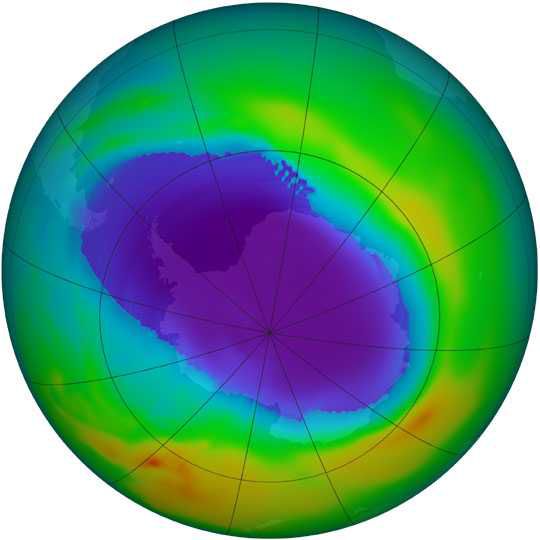-
 Electrode
Electrode
-
 Wi-Fi
Wi-Fi
-
 Secretion
Secretion
-
 Scraping
Scraping
-
 Pellet
Pellet
-
 Large Canary Island Telescope
Large Canary Island Telescope
-
 Semi-permeable membrane
Semi-permeable membrane
-
 Genomic
Genomic
-
 Torino scale
Torino scale
-
 Symmetric algorithm
Symmetric algorithm
-
 Emphyteusis
Emphyteusis
-
 Equinox equation
Equinox equation
-
 Svalbard Global Seed Vault
Svalbard Global Seed Vault
-
 Myelogram
Myelogram
-
 Residual error rate
Residual error rate
-
 Diurnal parallax
Diurnal parallax
-
 Pearlite
Pearlite
-
 Schists
Schists
-
 Photovoltaic panel
Photovoltaic panel
-
 Analgesic
Analgesic
-
 Switching
Switching
-
 Allele
Allele
-
 Measles virus
Measles virus
-
 Homo erectus
Homo erectus
-
 Avogadro
Avogadro
-
 Neutron
Neutron
-
 Inlandsis
Inlandsis
-
 Montrachet
Montrachet
-
 Methanisation
Methanisation
-
 Julian date
Julian date
Montreal Protocol
Following the discovery of a hole in the ozone layer over Antarctica in 1985, governments decided to implement strict measures to reduce the production and use of certain chlorofluorocarbons (CFCs).
This is why a conference was held in Canada in 1987 which concluded with the international treaty to fight against the hole in the ozone layer: the Montreal Protocol on Substances that Deplete the Ozone Layer.
Principle of the protocol
This protocol requires signatory countries (all countries since 2009) to progressively eliminate the use and production of substances that deplete the ozone layer (abbreviated as ODC for ozone-depleting chemicals): CFCs, halons, hydrochlorofluorocarbons (HCFCs), methyl bromides, bromochloromethanes, etc.
This protocol was then amended several times (London, Copenhagen, Montreal and Beijing amendments) to better define methods for eliminating ODCs, speed up the timetable and add new ODCs.
Deadlines, technology transfer and assistance funds are provided to support developing countries.
Objectives of the Montreal Protocol
By 2010, CFCs should no longer be produced, except for a few very precise and restricted uses (medical field). HCFCs should disappear by 2040, and perhaps earlier due to their greenhouse effect.
A PDF version of the Protocol is available on the website of the Secretariat of the Montreal Protocol.
 The hole in the ozone layer above Antarctica in September 2004. © Nasa - Goddard Space Flight Center Scientific Visualization Studio
The hole in the ozone layer above Antarctica in September 2004. © Nasa - Goddard Space Flight Center Scientific Visualization Studio
Latest
Fill out my online form.



